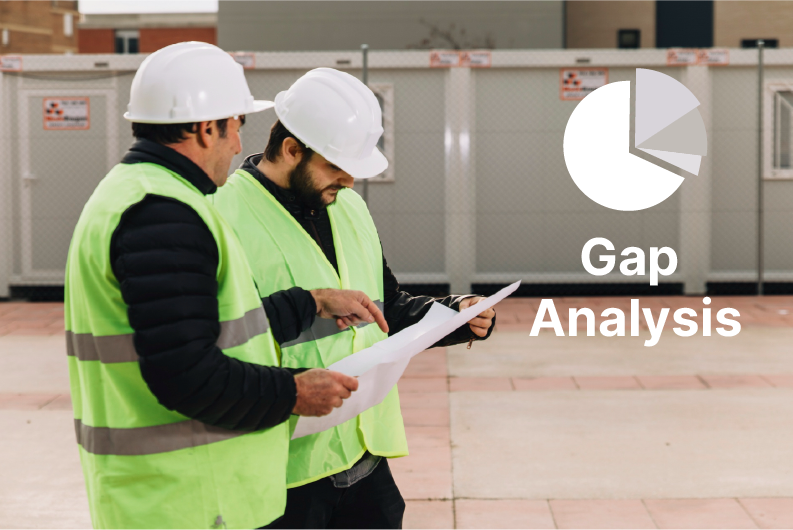The oil and gas industry is inherently risky. While regulations play a crucial role in ensuring baseline safety standards, a reactive approach solely focused on compliance can leave vulnerabilities. This is where gap analysis emerges as a powerful tool for proactive safety management.
What is Gap Analysis in safety management?
Gap analysis is a systematic method that identifies discrepancies between an organization’s current practices and its desired goals. In the context of safety, it involves:
- Desired State: Defining the ideal safety performance, often exceeding regulatory requirements. This could involve achieving zero accidents, implementing cutting-edge safety technologies, or fostering a strong safety culture.
- Current State: Evaluating existing safety protocols, procedures, training programs, and incident history.
By comparing these two states, the analysis reveals the “gaps” that need to be addressed to achieve the desired level of safety.
Proactive Safety Through Gap Analysis
Here’s how gap analysis empowers oil and gas companies to move beyond compliance and prioritize proactive safety:
- Identifying Safety Risks: Gap analysis goes beyond addressing regulatory shortcomings. It uncovers potential hazards that may not be explicitly covered by regulations, but could still lead to accidents. This allows for a more holistic approach to safety, considering both regulatory requirements and potential root causes of incidents.
- Prioritizing Improvement Efforts: The analysis helps prioritize safety initiatives by highlighting the most critical gaps that pose the greatest risk. Resources can then be allocated effectively to address these high-risk areas first.
- Data-Driven Decision Making: Gap analysis relies on a data-driven approach, utilizing safety data, incident reports, industry best practices, and learnings from root cause analysis. Root cause analysis delves deeper into past incidents to identify the underlying factors that contributed to the accident. By combining these data sources, companies can make objective decisions when implementing safety improvements.
- Continuous Improvement: Gap analysis is not a one-time exercise. Regularly conducting the analysis ensures continuous identification and closure of safety gaps. This fosters a culture of continuous improvement within a robust Safety Management System (SMS). An SMS provides a structured framework for managing safety risks, and gap analysis plays a vital role in ensuring the effectiveness of the SMS.
Putting Gap Analysis into Action
Here’s a step-by-step approach to implementing gap assessment for proactive safety management:
- Form a Cross-Functional Team: Involve personnel from operations, engineering, safety, and human resources to ensure a comprehensive understanding of current practices and desired goals.
- Define the Desired State: Establish clear and measurable safety goals that exceed regulatory requirements. Consider industry best practices and leading safety indicators (LSIs).
- Assess the Current State: Evaluate existing safety protocols, procedures, training programs, incident data, and the overall safety culture.
- Identify Gaps: Compare the desired and current states to identify areas where improvement is needed. Consider incorporating learnings from root cause analysis to identify deeper safety concerns.
- Develop an Action Plan: Develop and prioritize specific actions to address the identified gaps. This could involve implementing new technologies, revising procedures, or enhancing training programs.
- Monitor and Improve: Regularly monitor progress, track the effectiveness of implemented actions, conduct follow-up gap analyses, and integrate learnings from root cause analysis to ensure continuous improvement within the SMS.
Benefits of Proactive Safety Management
By adopting a proactive safety management approach through gap analysis, oil and gas companies can reap significant benefits:
- Reduced Incident Rates: Proactive identification and mitigation of risks lead to fewer accidents and injuries.
- Improved Operational Efficiency: Fewer safety incidents result in less downtime and disruption to operations.
- Enhanced Employee Morale: A strong safety culture fosters a sense of security and well-being among employees.
- Cost Savings: Reduced accidents translate to lower insurance premiums and healthcare costs.
- Improved Public Image: Demonstrating a commitment to safety strengthens a company’s reputation with stakeholders.
Conclusion
Regulations are a critical foundation for safety management, but they are not enough. Gap analysis is a powerful methodology that allows oil and gas companies to transcend mere compliance and proactively cultivate a culture of safety excellence. By consistently identifying and rectifying safety gaps, organizations can foster a work environment that prioritizes safety, thereby reducing the risk of incidents and accidents. Moreover, this proactive approach not only enhances the well-being of employees but also contributes to improved operational efficiency and sustainable long-term success.

